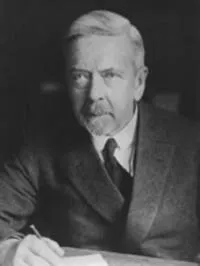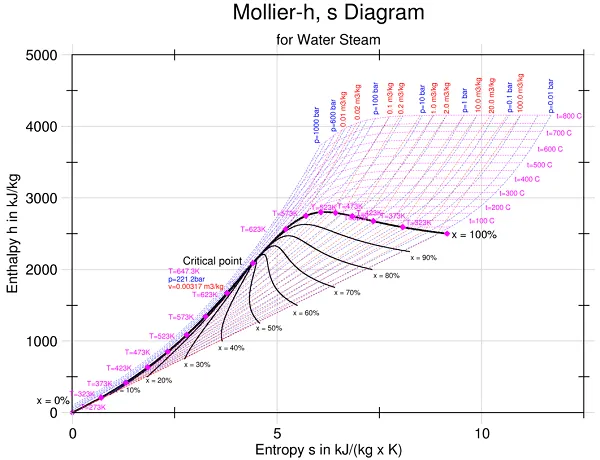
Mollier diagram: Part 1 – The Steve Jobs of the 19th century
Mollier diagram: Part 1 – The Steve Jobs of the 19th century
– by Jeroen Fijan – 12/11/19
Ever wonder what applications looked like a century ago? Here is the story of Richard Mollier, one of the first programmers in an era before smartphones and computers.
In this blog series we are going to dive deeper into one of the most powerful tools of HVAC technology; the Mollier diagram.
Part one; an introduction.
The age of efficiency
Bless the century in which we are living. There are so many things that make our life so much easier – from the active park assist function on your car to the supermarket order app on your smartphone with same-day delivery of your groceries.
All of this efficiency rests upon advanced hardware and software.
Computers don’t get tired or make mistakes, so they have taken over many dull and repetitive tasks and been incorporated in all layers of our society.
Back in the day
Before the advent of computers, all those boring jobs had to be done in person. If you had to make a thousand calculations, you would have to work your way through them yourself. I get tired just thinking about solving a thousand equations!

This was an issue that bothered Richard Mollier, a professor of applied science and mechanics in late-19th-century Germany. He worked on the big technology of his day – steam engines. This required finding out the properties of water in a given state, which in turn called for endless calculations.
It started with a homicide
Hanging out in a café one day reading a newspaper, Mollier came upon the story of a homicide in a neighbouring village. Stressed as he was with the mathematical problems in his work, he found this story a welcome diversion.
There were three suspects in the case: the wife, the mailman and a mistress who was ten years the victim’s junior. The journalist had written a list with all the facts known about the suspects, which looked something like this:
Suspect: Wife
Age: 35
Motive: Jealousy
Alibi: Drinking tea with friends
As Mollier was reading the story, with the mathematical problems from his work still fresh in the back of his mind, he had a revelation: What if he made a chart with all the thermodynamic suspects for every state? He got to work and made it happen.
Get the friction out of the system
To be honest, I don’t know if it happened exactly this way. I like to think it did. The fact is, Mollier found a way to simplify calculations involving thermodynamic processes.

If you calculate all the properties of a thousand given states, you develop a chart with all the data you will need in the future. While connecting the dots, Mollier ended up with the famous H-S diagram which plots total heat against entropy. This shows the state and every property which belongs to it in a fairly simple chart.
Conclusion
Of course, Mollier probably needed to make a thousand calculations before he finished – but the people who followed him would be free of this tedious job forever. In that sense, you can see Mollier as one of the first programmers, making complex tasks easier and more efficient. And we are still using the solution he found more than a hundred years ago!
In the next part we are going to dive deeper in the theoretic principles and the magic behind the diagram. Sign in for our newsletter if you don’t want to miss a thing about this topic.
Jeroen Fijan | R&D Manager
Jeroen Fijan has been working at Heinen & Hopman since 2001. He started as a draughtsman and, over the years, worked his way up to the top of the R&D division. Sustainability is a top priority in the quest to improve H&H’s products and processes.